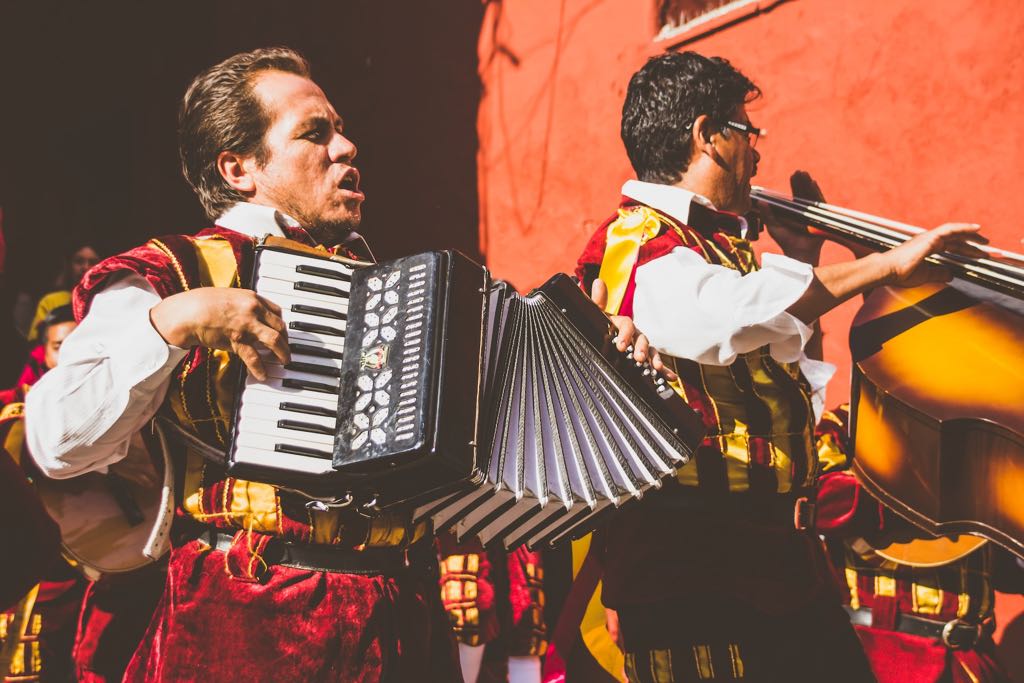Submitted by Susanne Bacon.

Have you ever listened to the radio while driving into Mt. Rainier National Park? Then you might have realized that, at one point, NPR and similar channels suddenly fade and the only broadcasting stations available are one with country music and one with music sounding quite Bavarian. Only – it is Mexican, and all the news and announcements are made in Spanish. I put one and one together, but I had to verify on the internet that my assumptions were true. So, here’s the reason Mexican music sometimes sounds so very Southern German.
As you may or may not know, the largest ethnic group in Texas right after the Hispanics derives from German roots. Germans immigrated from the 1830s and settled in kind of a belt in Central Texas. Almost PR-like letters by some first expats had been sent back to their mother country and caused pretty much a chain reaction. German immigration and influence prevailed in Texas until the 1890s. But remember, Texas had originally not belonged to the U.S. In the Mexican-American War of 1848, many – mostly Roman Catholic – German immigrants sided with Mexico and emigrated to the defeated nation.
Meanwhile, Mexico had accumulated debts and tried to settle them. Britain and Spain negotiated with the government, but France, the third creditor wanted to conquer the Hispanic country. Emperor Napoleon III (not to be mixed up with Bonaparte) tricked Maximilian von Hapsburg into believing that the Mexican population didn’t want anything more urgently them him as the head of their nation. Thus, from 1864 through 1867 Mexico had an Emperor with an Austrian-Bavarian bloodline. He was executed, after the French military, his only support, had bailed in 1866.

German Prince Otto von Bismarck made an immigration contract with the Mexican government later in the century. In the 20th century Russian Mennonites of Northern German descent migrated from Canada to Mexico. They were followed by a wave of Jewish refugees from Germany, Mexican diplomat Gilberto Bosques Saldovar playing a pivotal role in the French underground railroad network.
So, German influences galore. The accordion became a staple in Mexican music; so did diverse German musical styles such as the polka. Germans were at the roots of the Mexican cheese and brewing industry – think Negra Modelo. Coffee plantations, food processing plants, Oktoberfests are other imports of German origin. Even Frida Kahlo, Mexico’s probably most famous painter, is of German descent. And the German language is, after French, the second most studied foreign language in Mexico.
So, if you are headed for Mt. Rainier one of the next weekends or if you coincidentally switch into a Hispanic radio channel, you are hearing right. You might be hearing a waltz or a polka-derived norteño.
And I have a hunch that Emperor Maximilian may have danced with his wife to the former if not the latter in his palace rooms enjoying the performance of the musicians that he had brought along from so far away.
Caption 1
The accordion is one of Mexico’s music staples kudos to German immigrants. (Photo: Bernardo Ramonfaur @https://unsplash.com/)
Caption 2
Emperor Maximilian of Mexico brought Austrian musicians and, maybe, the waltz to Mexico. (Photo: Alvin Mahmudov @https://unsplash.com/)
Source: The Suburban Times




Recent Comments